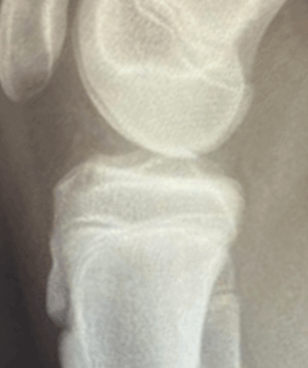
What is Osgood-Schlatter disease?
Osgood-Schlatter disease, also known as tibial tuberosity apophysitis, is a very common cause of knee pain in the young and active population.
We already have a chapter on our website about sports injuries in children, but since Osgood-Schlatter is a common sports-related condition in children, we’ve dedicated an entire chapter to it.
Although the disease is benign, the recovery period can be prolonged and may lead patients to stop exercising or give up sports they enjoy.
Dr. Ronen Sever, our in-house expert and a pediatric orthopedic specialist, has written this post as well as the one on sports injuries featured on our website.
What are the causes of Osgood-Schlatter disease?
The patellar tendon inserts into the shin bone at an area called the tibial tubercle. At a young age, this area consists of soft cartilaginous tissue, which gradually ossifies around age 10–12 in girls and 12–14 in boys. During this period of adolescence, Osgood-Schlatter can develop, especially as a result of repetitive stretching exercises and activation of the quadriceps muscle and patellar tendon. This repetitive strain can lead to microscopic tears in the tendon’s connection to the bone, resulting in micro-bleeds, small fractures, and an inflammatory response that causes swelling, tenderness, and sometimes redness.
Osgood-Schlatter is therefore considered an “overuse” injury, commonly affecting athletically active teenagers. The load on this area increases with weight gain, greater physical intensity, limb growth spurts, and, less commonly, significant trauma.
What will children with Osgood-Schlatter disease complain of?
The most common complaint is gradually developing pain in the front of the knee, with tenderness at the junction between the patellar tendon and the shin bone.
It usually affects one knee, although symptoms can appear in both knees simultaneously or intermittently in about 20–30% of cases.
Who do we tend to see Osgood-Schlatter disease in?
Risk factors include male gender, ages 12–15 in boys and 8–12 in girls, limited flexibility in the quadriceps and gastrocnemius muscles, and periods of rapid growth.
Sports associated with higher risk include football, basketball, volleyball, track (especially sprinting), and gymnastics.
How prevalent is Osgood-Schlatter disease?
This is one of the most common causes of knee pain in active teenagers.
Studies show a prevalence of about 10% among adolescents aged 12–15, with 11.4% in boys and 8.3% in girls.
How can Osgood-Schlatter disease be detected?
Diagnosis is usually clinical, and imaging is often unnecessary. However, if symptoms are unclear or there was previous trauma, an x-ray can help rule out other issues such as fractures or infections.
If a knee x-ray is taken, classic findings include elevation of the tibial tuberosity, soft tissue swelling over it, fragmentation at the bone attachment, and calcifications within the patellar tendon.
It’s important to note that these findings can also appear in asymptomatic individuals, so clinical correlation is key. If x-rays are done, they should include two views of both knees for proper comparison.
What is the treatment for Osgood-Schlatter disease?
To summarize: this condition resolves on its own. However, full resolution may take years until the growth plates close.
To relieve pain, treatment is divided into symptomatic and preventive care.
Symptomatic treatment includes rest, cold compresses, non-steroidal anti-inflammatory drugs (NSAIDs), and sub-patellar knee straps to reduce localized stress.
Preventive treatment involves modifying exercise routines and training frequency. If ineffective, switching sports may be necessary.
Physical therapy is also beneficial, focusing on stretching exercises for the quadriceps, gastrocnemius, gluteal muscles, and hamstrings.
Can we inject steroids or surgically treat Osgood-Schlatter?
There is no evidence supporting the use of steroid injections for Osgood-Schlatter; they may even cause tendon rupture.
Surgery is rarely needed and is reserved for cases of severe, persistent pain during adolescence, particularly when accompanied by calcifications within the patellar tendon.
In summary, this is a relatively common condition among physically active adolescents. It’s a routine diagnosis for pediatric orthopedists, who must ensure correct identification, avoid overlooking other important conditions, and provide appropriate care to help young patients return to pain-free activity.
Good luck!
For comments and questions, please register
